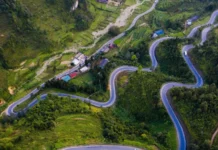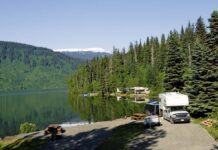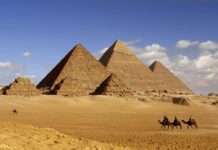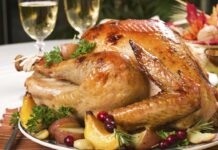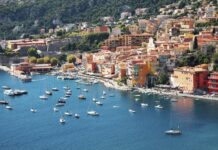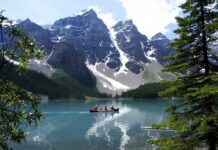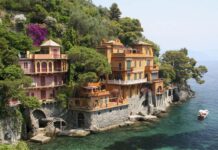Vietnam, a land of breathtaking natural beauty, rich history, vibrant culture, and mouthwatering cuisine, is calling your name for 2025! This comprehensive guide will equip you with everything you need to plan an unforgettable adventure through this captivating Southeast Asian gem.
Why Vietnam in 2025?
-
Continued Growth & Improved Infrastructure: Vietnam is constantly developing, leading to better transportation options, a wider range of accommodations, and new experiences for travelers.
-
Visa Policies: Keep an eye on potential updates to visa regulations that could make entry even easier.
-
Sustainable Tourism Focus: As global awareness grows, Vietnam is increasingly focusing on sustainable tourism practices, allowing you to travel more responsibly.
-
Excellent Value for Money: Compared to many Western destinations, Vietnam offers incredible experiences without breaking the bank.
-
Year-Round Appeal: With diverse climates across the country, you can find a perfect time to visit depending on your desired region and activities.
Planning Your Trip: The Essentials
1. Determining Your Travel Style & Duration:
-
Backpacker/Budget Traveler: Focus on hostels, local transportation, street food, and free activities. Aim for at least 2-3 weeks to see a good portion of the country.
-
Mid-Range Explorer: Balance comfortable hotels, domestic flights/trains, a mix of local and tourist restaurants, and guided tours for key attractions. A 10-14 day trip allows for a diverse experience.
-
Luxury Traveler: Indulge in boutique hotels, private transfers, fine dining, and curated excursions. A shorter, more focused trip of 7-10 days can still offer incredible experiences.
-
Interests: Consider what draws you to Vietnam: history, culture, nature, food, adventure, relaxation? Tailor your itinerary accordingly.
2. Best Time to Visit:
Vietnam experiences diverse weather patterns due to its long north-south stretch. Consider these general guidelines:
-
North Vietnam (Hanoi, Sapa, Ha Long Bay):
-
Spring (March-May): Pleasant temperatures, blooming flowers, ideal for trekking and outdoor activities.
-
Summer (June-August): Hot and humid with occasional rain. Good for beach destinations but can be challenging for city exploration.
-
Autumn (September-November): Considered the best time, with mild temperatures, clear skies, and beautiful scenery (especially rice terraces).
-
Winter (December-February): Cool and dry, especially in the far north where it can get quite cold.
-
-
Central Vietnam (Hoi An, Da Nang, Hue):
-
Dry Season (March-September): Hot and sunny, ideal for beaches and exploring.
-
Rainy Season (October-February): Can experience heavy rainfall and occasional typhoons. Hoi An can flood.
-
-
South Vietnam (Ho Chi Minh City, Mekong Delta, Phu Quoc):
-
Dry Season (December-April): Hot and sunny.
-
Rainy Season (May-November): Hot and humid with afternoon showers. Rain is usually short-lived and doesn’t drastically impact travel.
-
3. Visa Requirements:
Visa policies can change, so it’s crucial to check the latest information from your country’s Vietnamese embassy or consulate well in advance of your trip in 2025. Many nationalities can enter Vietnam visa-free for a certain period (usually for tourism purposes). Longer stays or specific purposes may require a visa. Consider applying for an e-visa online if eligible.
4. Budgeting:
Vietnam is generally an affordable destination, but your budget will depend on your travel style. Here’s a rough estimate per person per day:
-
Budget: $25 – $40 USD (hostels, local food, public transport)
-
Mid-Range: $50 – $100 USD (comfortable hotels, a mix of restaurants, some tours)
-
Luxury: $150+ USD (boutique hotels, fine dining, private tours and transfers)
Factors influencing your budget:
-
Accommodation: Hostels are cheapest, followed by budget guesthouses, mid-range hotels, and then luxury resorts.
-
Transportation: Local buses and trains are the most economical, while domestic flights are faster but pricier. Taxis and ride-hailing apps are convenient but add to the cost.
-
Food & Drink: Street food and local eateries are incredibly cheap and delicious. Tourist restaurants and Western food will be more expensive.
-
Activities & Entrance Fees: Costs for tours, entrance tickets to attractions, and activities can add up.
-
Shopping: Factor in your budget for souvenirs and local crafts.
5. Getting There:
-
By Air: Major international airports are located in Hanoi (Noi Bai – HAN), Da Nang (DAD), and Ho Chi Minh City (Tan Son Nhat – SGN). Many airlines offer direct and connecting flights from around the world.
-
Overland: Border crossings are possible with neighboring countries like Laos and Cambodia, offering a more adventurous travel route.
6. What to Pack:
-
Clothing: Lightweight, breathable fabrics suitable for a tropical climate. Pack layers for cooler evenings or air-conditioned spaces, especially in the north during winter. Include modest clothing for temples and pagodas.
-
Footwear: Comfortable walking shoes are essential. Bring sandals or flip-flops for warmer weather and beaches.
-
Toiletries: Basic toiletries, but you can easily purchase most items in Vietnam. Don’t forget sunscreen, insect repellent, and hand sanitizer.
-
Medications: Any personal medications you require, along with a basic first-aid kit.
-
Electronics: Universal adapter, phone charger, portable power bank, camera.
-
Documents: Passport (with at least six months validity), visa (if required), flight/transportation tickets, travel insurance details, copies of important documents stored separately.
-
Other Essentials: Small backpack for day trips, reusable water bottle, small padlock (for hostel lockers), sunglasses, hat.
Getting Around Vietnam:
-
Domestic Flights: The quickest way to cover long distances. Several budget airlines operate within Vietnam.
-
Trains: A scenic and comfortable option for traveling between major cities, especially the Reunification Express connecting Hanoi and Ho Chi Minh City. Book in advance, especially during peak season.
-
Buses: An extensive network of both public and private buses covers most of the country. Sleeper buses are common for overnight journeys.
-
Motorbikes/Scooters: A popular way to explore smaller towns and rural areas, but only recommended for experienced riders with an international driving permit. Be aware of traffic conditions.
-
Taxis & Ride-Hailing Apps (Grab): Convenient for short distances in cities. Agree on the fare beforehand or use Grab for transparent pricing.
-
Cyclo/Rickshaw: A fun and leisurely way to explore the Old Quarter of Hanoi or parts of Hoi An. Negotiate the price before your ride.
-
Boats/Ferries: Essential for exploring waterways like Ha Long Bay and the Mekong Delta, and for reaching islands like Phu Quoc.
Must-See Destinations & Experiences for 2025:
North Vietnam:
-
Hanoi: Explore the charming Old Quarter, visit Hoan Kiem Lake and Ngoc Son Temple, witness the Thang Long Water Puppet Theatre, and delve into history at the Ho Chi Minh Mausoleum and the Temple of Literature. Don’t miss the delicious street food!
-
Sapa: Trek through stunning rice terraces, encounter hill tribe communities (Hmong, Dao, Tay), and conquer Fansipan, the “Roof of Indochina.”
-
Ha Long Bay: Cruise through the breathtaking emerald waters dotted with limestone karsts. Kayak through hidden lagoons, explore caves, and enjoy overnight stays on junks. Consider visiting less crowded Lan Ha Bay or Bai Tu Long Bay.
-
Ninh Binh: Discover the “Ha Long Bay on Land” with boat tours through Tam Coc’s rice paddies and limestone cliffs, cycle through picturesque countryside, and visit ancient temples like Bich Dong Pagoda.
-
Mai Chau: Experience rural Vietnamese life in a peaceful valley surrounded by rice paddies and ethnic minority villages.
Central Vietnam:
-
Hoi An: Wander through the UNESCO World Heritage-listed Ancient Town with its colorful lanterns, tailor shops, and historic architecture. Relax on An Bang Beach and indulge in cooking classes.
-
Da Nang: Enjoy the beautiful beaches (My Khe Beach), cross the iconic Dragon Bridge, visit the Marble Mountains, and explore the Linh Ung Pagoda with its giant Lady Buddha statue.
-
Hue: Explore the former imperial capital, a UNESCO World Heritage site, with its Citadel, royal tombs, and Perfume River.
-
Phong Nha-Ke Bang National Park: Discover spectacular cave systems, including the massive Son Doong Cave (requires booking well in advance), Paradise Cave, and Dark Cave.
South Vietnam:
-
Ho Chi Minh City (Saigon): A bustling metropolis with a blend of modern and colonial architecture. Visit the War Remnants Museum, Reunification Palace, Notre Dame Cathedral, and the Central Post Office. Experience the vibrant Ben Thanh Market and the nightlife.
-
Mekong Delta: Take a boat trip through the intricate network of waterways, visit floating markets (Cai Rang), fruit orchards, and local workshops.
-
Phu Quoc Island: Relax on pristine beaches, go snorkeling or diving, explore the national park, and enjoy fresh seafood.
-
Con Dao Islands: A group of islands with stunning natural beauty and a poignant history as a former prison. Ideal for diving, snorkeling, and peaceful relaxation.
-
Da Lat: A charming hill station known for its French colonial villas, flower gardens, waterfalls, and cooler climate.
Food & Drink: A Culinary Adventure:
Vietnamese cuisine is world-renowned for its fresh ingredients, aromatic herbs, and delicate flavors. Don’t leave without trying:
-
Pho: A fragrant noodle soup with broth, meat (beef or chicken), herbs, and spices.
-
Banh Mi: A delicious and affordable baguette sandwich filled with various meats, pate, pickled vegetables, and chili.
-
Goi Cuon (Fresh Spring Rolls): Translucent rice paper rolls filled with shrimp, vermicelli noodles, vegetables, and herbs, served with a peanut dipping sauce.
-
Cha Gio (Fried Spring Rolls): Crispy fried rolls filled with ground pork, shrimp, and vegetables.
-
Bun Cha: Grilled pork patties and vermicelli noodles served with a dipping sauce, fresh herbs, and pickled vegetables (Obama’s Hanoi choice!).
-
Cao Lau: A unique noodle dish found only in Hoi An.
-
Mi Quang: A flavorful turmeric noodle dish from the Quang Nam province.
-
Banh Xeo: Crispy savory pancakes filled with shrimp, bean sprouts, and mung beans.
-
Vietnamese Coffee: Strong and rich, often served with condensed milk (Ca Phe Sua Da).
-
Fresh Fruit Smoothies (Sinh To): A refreshing treat in the tropical climate.
-
Local Beers: Bia Hoi (freshly brewed draft beer) is incredibly cheap and popular.
Accommodation Options:
Vietnam offers a wide range of accommodation to suit all budgets and preferences:
-
Hostels: Great for budget travelers and meeting other backpackers.
-
Guesthouses: Locally run, offering a more authentic experience and often good value.
-
Budget Hotels: Clean and basic rooms with private bathrooms.
-
Mid-Range Hotels: Comfortable amenities and good service.
-
Boutique Hotels: Stylish and unique properties with a focus on design and personalized service.
-
Luxury Resorts: High-end accommodations with extensive facilities and beachfront locations.
-
Homestays: Immerse yourself in local culture by staying with a Vietnamese family, especially in rural areas.
-
Junks/Boats: Unique overnight stays on Ha Long Bay and the Mekong Delta.
Responsible Travel in Vietnam:
-
Respect Local Customs and Traditions: Dress modestly when visiting religious sites, ask for permission before taking photos of people, and be mindful of local etiquette.
-
Support Local Businesses: Choose locally owned restaurants, guesthouses, and tour operators. Buy souvenirs from local artisans.
-
Be Mindful of the Environment: Avoid single-use plastics, dispose of waste properly, and choose eco-friendly tours and activities.
-
Learn a Few Basic Vietnamese Phrases: Even a simple “Xin chao” (hello) or “Cam on” (thank you) will be appreciated.
-
Bargain Respectfully: Bargaining is common in markets, but do so politely and with a smile.
-
Be Aware of Scams: Be cautious of overly friendly strangers and always confirm prices before agreeing to services.
-
Leave No Trace: Help preserve the beauty of Vietnam’s natural landscapes.
Staying Connected:
-
SIM Cards: Easily available at airports and local shops. Choose a local provider for affordable data and calls.
-
Wi-Fi: Widely available in hotels, cafes, and restaurants, especially in tourist areas.
Health and Safety:
-
Consult Your Doctor: Discuss necessary vaccinations and health precautions before your trip.
-
Food and Water Safety: Drink bottled or purified water. Be cautious with street food initially and choose vendors with high turnover.
-
Insect Repellent: Essential, especially during dawn and dusk, to protect against mosquito-borne diseases.
-
Travel Insurance: Highly recommended to cover medical emergencies, trip cancellations, and lost luggage.
-
Be Aware of Your Surroundings: Keep your belongings secure and be cautious in crowded areas.
Useful Vietnamese Phrases:
-
Xin chao: Hello
-
Cam on: Thank you
-
Tam biet: Goodbye
-
Vâng/Dạ: Yes (formal/informal)
-
Không: No
-
Bao nhieu tien? How much?
-
Mot: One
-
Hai: Two
-
Ba: Three
-
Toi khong hieu: I don’t understand
-
Toi muon…: I want…
-
Nha ve sinh o dau? Where is the restroom?
-
Rat ngon: Very delicious
Planning your ultimate Vietnam adventure in 2025 promises an enriching and unforgettable experience. With its diverse landscapes, captivating culture, and welcoming people, Vietnam has something to offer every type of traveler. Start planning now, and get ready to create memories that will last a lifetime!



